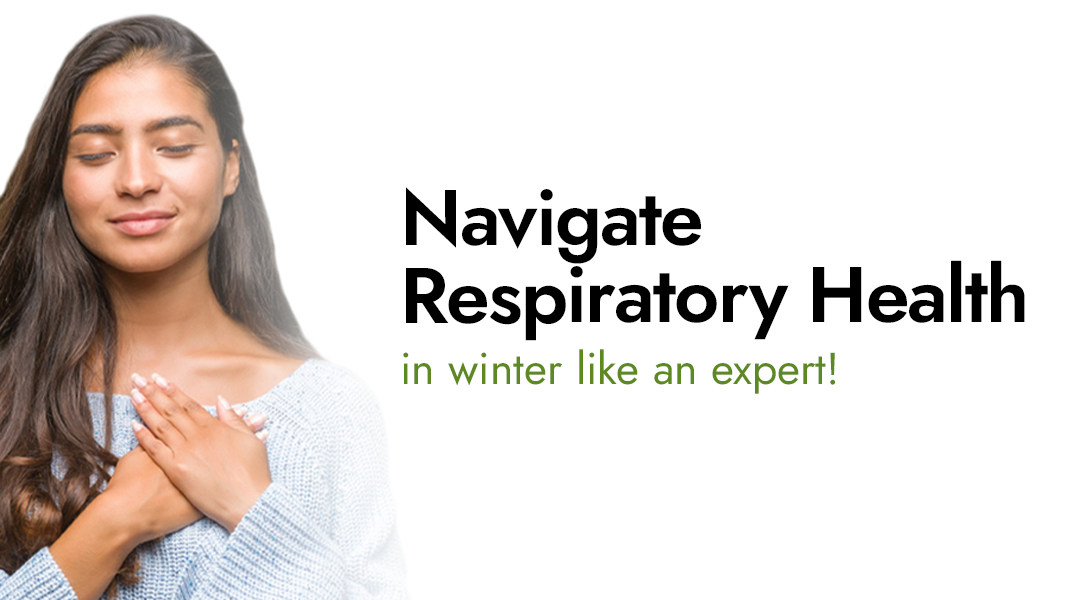Winter is a widely loved season. Although the cool breeze and numerous opportunities for snuggling with hot chocolate make it lovely, our respiratory health is often impacted when the temperature falls below the optimal warm numbers. When we’re outside in cold temperatures, it’s quite normal to feel discomfort when we breathe. But, extreme cold air is often dangerous. Mayo Clinic says, “Cold air is generally drier, and your body works to humidify this. In that process, it can cause irritation to the airways, which results in a process called bronchospasm, where those airways narrow and tighten, and you get that feeling of shortness of breath.” This dry air often spells more trouble for people with lung diseases.
The two commonly known reasons that affect respiratory health in winter are low temperatures and rising pollution. But apart from these, here are some other prominent ones:
- Patients with pre-existing respiratory conditions exhibit a worsening of symptoms. This happens because allergies flare up when people tend to stay indoors constantly.
- Fog and high levels of pollution cause irritation in the airway.
- Poor ventilation indoors causes high transmission of diseases.
Keeping all this in mind, it is important that we take important steps to protect our respiratory health from harsh winter conditions. Here are some steps to follow:
- Layer up on clothes. That will keep your temperature regulated and keep you warm.
- Avoid crowded spaces. The congestion will make breathing difficult.
- Do not smoke.
- A nutritious diet with citrus fruits, protein, and pulses will help build immunity, making your body stronger.
- Improve the ventilation in your house by using air purifiers or humidifiers.
- Stay hygienic. Our hands, eyes, etc. are all points of entry for germs.
- Stay vaccinated to prevent conditions like pneumonia.
- Avoid participating in activities that exhaust you outside.
As mentioned above, the winter season is prominently known for being the one to cause the most sickness. What you’ve read above is a list of preventive steps that are more commonly mentioned. In the upcoming list, we will try to obtain a deeper understanding of the most common diseases to occur in the winter season and self-care or preventive measures.
The first one any of us think of when we talk about winter diseases is the Common Cold.
Almost everyone in their lifetime has experienced the common cold at least once. Symptoms include sneezing, runny nose, stuffy nose, cough, sore throat, etc. Some ways to take care of yourself when dealing with a common cold include taking the required medications and vitamins, drinking plenty of fluids, eating healthy, nutritious food, and getting enough rest.
A more serious infection is Pneumonia.
This infection is caused by viruses, bacteria, or fungi. In pneumonia, your lungs fill up with fluid and pus, making it hard to breathe as a result of the reduction in oxygen intake. Some ways to manage pneumonia include plenty of rest, fluids, supplements, and prescribed medications. Hospitalization is important for more serious levels of this infection.
Unattended symptoms of the common cold, along with nausea, fever, vomiting, and body pain, usually mean that you have the Flu.
The flu is caused by three main types of viruses: Influenza A, B, and C. Ways to take care of yourself when dealing with the flu are to take prescribed medications and vitamins to improve your immunity, drink warm fluids, take steamy baths, use humidifiers to clear airways, and ease breathing.
The cold weather and freezing air of winter make it difficult for our respiratory system to function properly. It is important that we take the right, important steps to take care of ourselves and prevent catching such infections.

